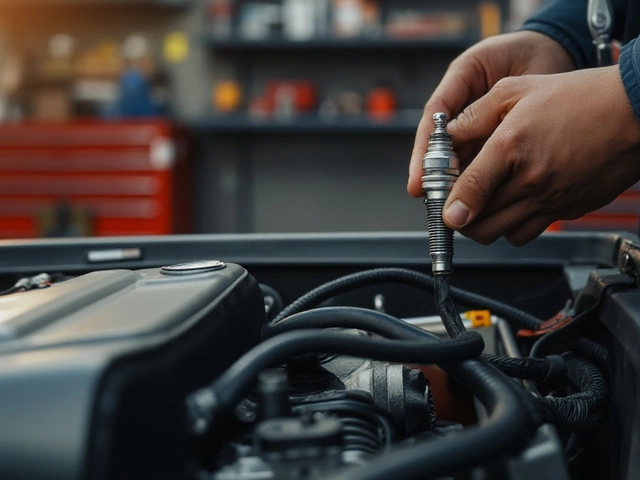Front Suspension Explained – What It Is and Why It Matters
If your car feels shaky, drifts on corners, or makes clunking noises, the front suspension is probably the culprit. The front suspension links your wheels to the car’s frame, controls steering, absorbs bumps, and keeps the tires in contact with the road. When it’s working, you barely notice it; when it’s not, every drive feels harder.
Common Front Suspension Problems
Most front suspension issues boil down to a few parts that wear out over time. Shock absorbers and struts lose their ability to dampen impacts, leading to a bouncy ride. Control arms can bend or develop bushings that crack, causing the wheel to wobble. Ball joints are tiny pivot points; if they go bad, you’ll hear a knocking sound when you turn. Finally, steering tie‑rods can loosen, making the wheel feel vague.
Here’s a quick checklist to spot trouble:
- Uneven tire wear – indicates a misaligned or worn component.
- Pulling to one side while steering straight – often a bad tie‑rod or control arm.
- Clunking or rattling when going over bumps – likely worn shocks, struts, or bushings.
- Vibrations through the steering wheel – could be tire issues, but also a sign of a broken ball joint.
- Steering feels loose or vague – check the rack and pinion, but also look at suspension bushings.
DIY Checks and Simple Maintenance
You don’t need a garage to do a basic inspection. First, park on a level surface, turn the wheels straight, then look at each front wheel from behind. The tire should sit evenly; any tilt means a suspension part may be sagging.
Next, give the wheel a firm push up and down. If it bounces more than once, the shock absorber or strut is leaking. Then, grab the wheel at the 9 and 3 o’clock positions and wiggle it. Any play indicates a worn ball joint or tie‑rod.
Lubricate any greasable bushings with a silicone‑based spray, but avoid oil‑based products that attract dirt. Replace worn-out shocks, struts, or bushings as soon as you notice problems – waiting only makes the damage spread to other components.
When you replace parts, it’s a good idea to get a wheel alignment. Even a brand‑new strut can leave the wheels out of sync, causing uneven tyre wear and poor handling.
If you’re not comfortable lifting the car or removing bolts, a quick visit to a local tyre centre can save you time and headaches. They can perform a full suspension inspection, spot hidden cracks, and do a professional alignment.
Regular maintenance – checking tyre pressure, rotating tyres, and keeping the suspension clean of debris – goes a long way toward extending the life of the front suspension. A smooth ride is worth the few minutes you spend checking these basics.
Bottom line: the front suspension is the unsung hero that keeps your car steady. Knowing the signs of wear, doing a simple visual and hands‑on check, and getting timely repairs will keep you safe and your car running happily for miles to come.
 10 April 2025
10 April 2025
How Long Should Your Car's Front Suspension Last?
Bent on ensuring your car's front suspension is in tip-top shape? Discover how long it typically lasts, along with practical tips to maintain it. From understanding wear and tear to exploring maintenance hacks, this article offers a no-nonsense look at keeping your ride smooth and safe. Avoid unexpected repairs and know what signs indicate it's time to replace those suspension parts.
 10 November 2024
10 November 2024
How to Recognize Signs of Bad Front Suspension in Your Vehicle
Identifying issues with your front suspension can save you from costly repairs and ensure a smooth ride. Learn to spot signs of bad suspension like unusual noises, uneven tire wear, or handling issues. This article provides insights and tips for checking and diagnosing your car's suspension problems effectively. It offers guidance on what symptoms to look out for and when to seek professional help.






0